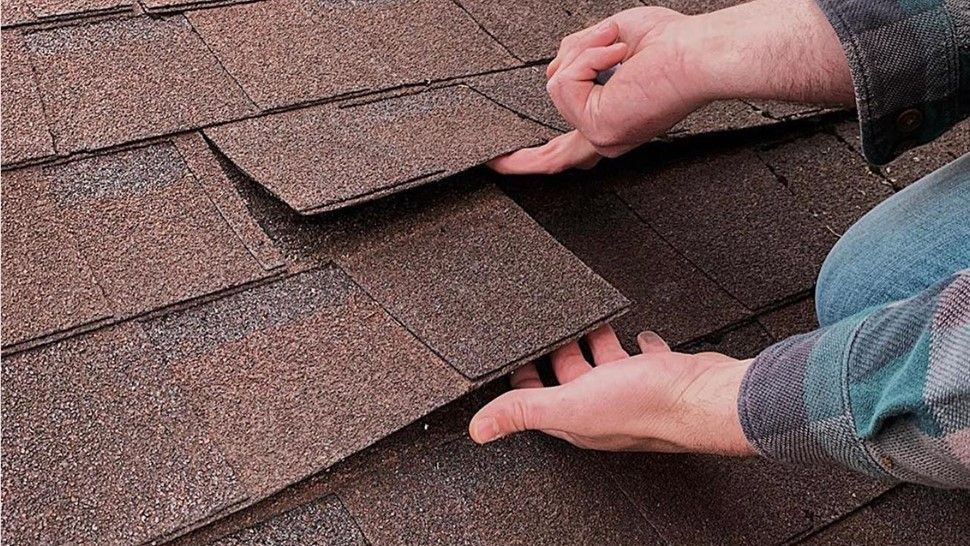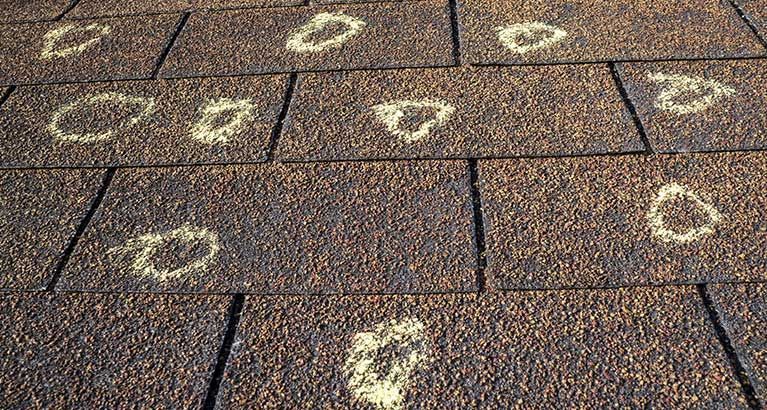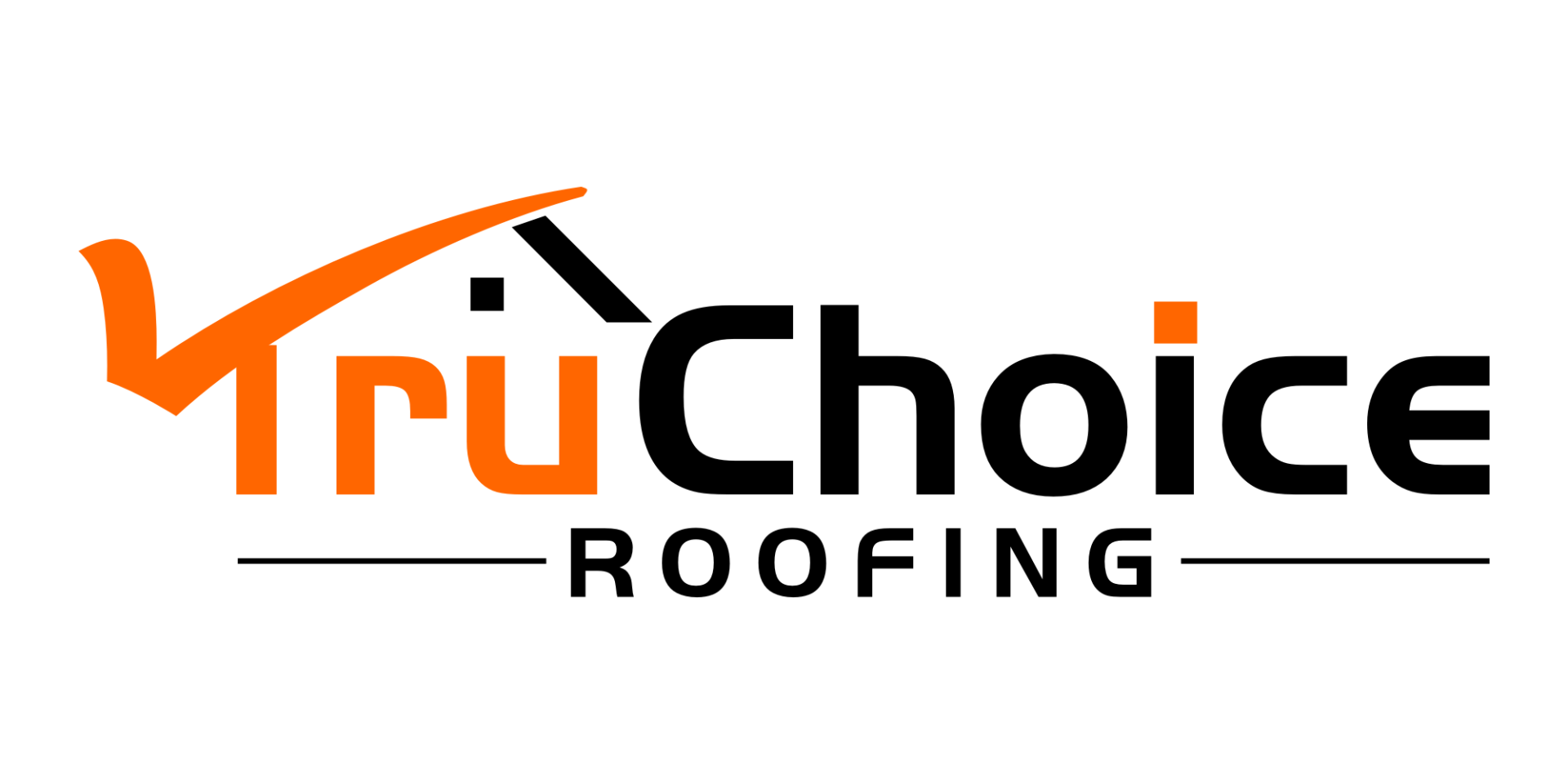Roof Storm Damage Checklist
ROOF STORM DAMAGE CHECKLIST
Brought to you by TruChoice Roofing
No matter where you reside in the United States, you've likely faced your fair share of challenging weather conditions, from hurricanes and tornadoes to hailstorms and intense squalls. These storms can wreak havoc on roofs and other exterior surfaces of your home.
WHAT TO DO AFTER A STORM
Identifying roof damage and knowing the necessary steps post a major storm is crucial. Explore this guide on recognizing various types of roof storm damage and learn the steps you should take.

TYPES OF ROOF STORM DAMAGE
WIND
Hurricane-force winds (74 mph or greater) or gale-force winds (39-54 mph) can visibly damage your roof. High winds may remove or tear shingles, exposing the underlayment, roof deck, or waterproofing material to the elements. Sudden gusts during less severe storms can lift and curl shingles, breaking the water-tight seal and leaving your roof vulnerable to damage from wind-driven rain.
HAIL
Though hailstorms are typically short-lived, hailstones can leave dents or pockmarks in shingles and dislodge shingle granules. Granules protect your roof from rain and sun damage, and hail damage can compromise the aesthetic appearance of your roof.
STANDING WATER
Poorly drained roofs can lead to standing water after heavy rain, especially in uneven areas. Clogged gutters may cause rainwater backup under shingles, potentially allowing moisture to penetrate the underlayment or roof deck.
DEBRIS
Storm debris, from small branches to large tree limbs, can end up on your roof. Larger objects can dent or impact shingles, leaving areas vulnerable to moisture intrusion.
ROOF STORM DAMAGE
Refer to this roof storm damage checklist to understand the extent of your roof damage and assess whether you need a full roof replacement or just specific repairs.

SCHEDULE AND CONDUCT A ROOF INSPECTION
Prioritize safety by contacting a trusted roofing contractor such as TruChoice for an inspection and damage assessment. Many contractors offer free inspections and are skilled at safely identifying roof damage.
Roof: Visually assess your roof perimeter for any visible storm damage. Take notes or pictures for insurance purposes, documenting any dented, torn, curled, or missing shingles.
Gutters, Vents, and Windows: Check for dents on gutters and roofing accessories. Inspect windows for cracks, broken glass, loose weather-stripping, and torn screens.
Outside Areas: Walk around your home's exterior for fallen tree limbs, damaged fence posts, and other exterior damage. Check flat surfaces like patios and decks for hail damage.
Attic and Ceilings: Look for leaks and water spots. Even if the roof appears undamaged externally, wind and hail may cause unseen leaks. Inspect ceilings, light fixtures, and the attic for water damage using a flashlight.
HIRE A DEPENDABLE, TRUSTED ROOFING CONTRACTOR
Choose a contractor you can trust. Be cautious of contractors offering discounts after regional storms. Start by researching independent roofing contractors reviews in your area.
Roofing contractors can:
Assess damage professionally
Provide repair cost estimates
Replace or repair your roof
TALKING TO A TRUSTED ROOFING CONTRACTOR
When choosing a reliable contractor, ensure they are licensed, insured, and offer a strong warranty. Check online reviews and their social media for experiences with their services.
CALL YOUR HOMEOWNERS INSURANCE PROVIDER
If you discover significant damage, involve your homeowners insurance provider immediately. File a claim based on their requirements, and their representatives can assist you in obtaining proper compensation. They may also send their assessor to evaluate the roof storm damage your home sustained.
Many roofing companies can you help you with the insurance claim process. TruChoice Roofing has years of experience dealing with the insurance companies!

Contact us here at TruChoice Roofing for a FREE INSPECTION for invaluable peace of mind!







